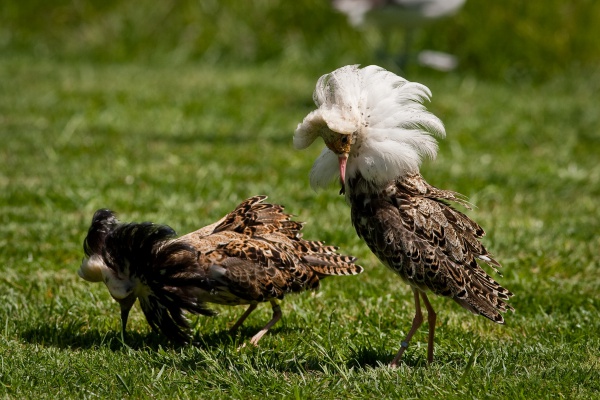Facts About Ruff
The ruff is a medium-sized wading bird commonly found across northern Eurasia. Noted for their social and migratory nature, ruffs gather in large flocks during winter in regions such as southern and western Europe, Africa, southern Asia, and Australia. A striking characteristic of the ruff is its pronounced sexual dimorphism: males are larger and exhibit extravagant breeding plumage, while females typically have grey-brown upperparts and white underparts.
In terms of diet, ruffs forage in wet grasslands and muddy areas, primarily consuming insects but also sampling some plant material.
Part of the Scolopacidae family, the ruff has no recognized subspecies. The species was first described by Carl Linnaeus in 1758 as Tringa pugnax. The name "ruff" originates from the bird's ornamental feathers, reminiscent of a ruffled neck accessory. These birds breed in northern Eurasia and migrate to Africa for the winter, favoring wetlands for their breeding grounds and avoiding barren tundra.
During the breeding season, male ruffs perform elaborate displays at leks, engaging in intricate mating rituals to attract females.
Despite their fascinating behaviors, ruffs face several conservation challenges, including habitat loss, hunting, and climate change. Although classified as "least concern" on the global conservation scale, their populations in Europe are decreasing due to factors such as drainage, fertilization, and habitat loss. The ruff is listed under the Agreement on the Conservation of African-Eurasian Migratory Waterbirds (AEWA), which provides them with special conservation measures.
Moreover, the ruff's genetic polymorphism, featuring three distinct male forms, has intrigued scientists, offering valuable insights into the genetic basis of mating behavior and physical appearance.

 Poland
Poland